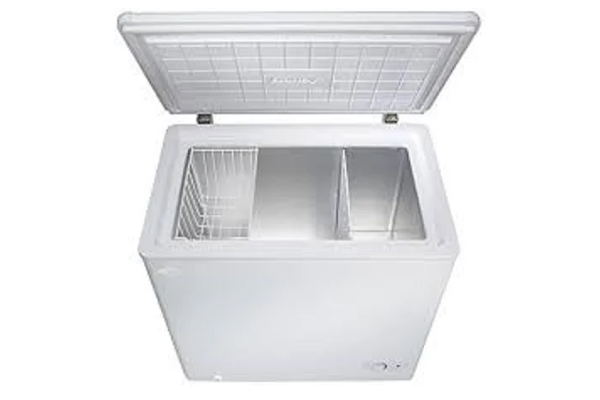

Not Cooling Properly: If your deep freezer isn't maintaining the desired temperature, check the thermostat settings first. Ensure that the temperature control is set to the appropriate level. If the settings seem correct but the freezer still isn't cooling properly, check for any obstructions blocking the vents or coils. Dust and debris can accumulate over time, hindering airflow and affecting cooling efficiency. Clean the vents and coils thoroughly and ensure proper ventilation around the appliance.
Frost Buildup: Excessive frost buildup inside the freezer can impede its performance and lead to temperature fluctuations. If you notice significant frost accumulation, it may indicate a problem with the defrost system. Inspect the defrost heater, thermostat, and timer for any signs of malfunction. Replace any faulty components as needed. Additionally, regularly defrosting the freezer and keeping the door closed as much as possible can help prevent frost buildup.
Strange Noises: Unusual noises coming from the deep freezer can be indicative of various issues, such as a malfunctioning compressor, evaporator fan, or condenser fan motor. Listen closely to identify the source of the noise and inspect the corresponding components for any signs of damage or wear. Lubricating moving parts and tightening loose screws may alleviate minor noise issues. However, if the problem persists, it's advisable to seek professional assistance to diagnose and address the underlying cause.
Leaking Water: Water leakage from the deep freezer can stem from several sources, including a clogged defrost drain or damaged door gasket. Check the defrost drain for any obstructions and clear them using a pipe cleaner or hot water. Inspect the door gasket for tears or gaps and replace it if necessary to ensure a proper seal. Additionally, ensure that the freezer is level to prevent water from pooling and leaking out.
Electrical Issues: If the deep freezer fails to turn on or experiences intermittent power outages, check the power cord and outlet for any signs of damage. Ensure that the outlet is receiving power by testing it with another device. If the problem persists, it could indicate a faulty compressor, capacitor, or electronic control board. In such cases, it's best to enlist the services of a qualified technician to diagnose and rectify the electrical issue safely.